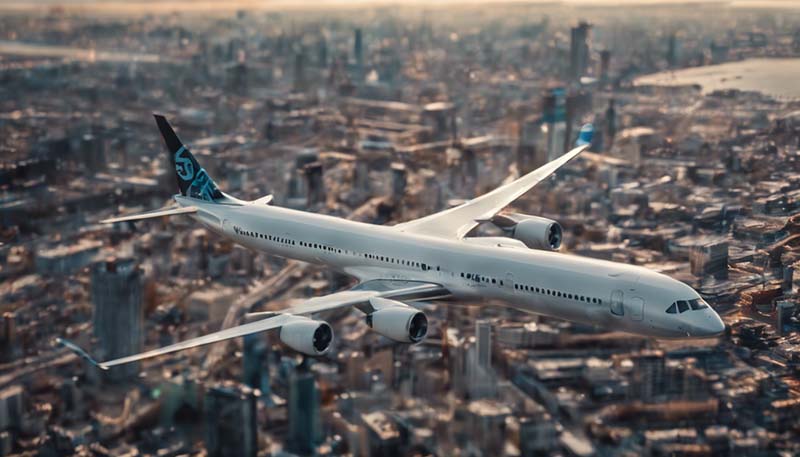As the world moves towards a more connected future, the role of technology in various industries becomes increasingly important. One such industry that is on the cusp of a revolutionary change is aviation. The introduction of 5G technology is expected to bring about significant improvements in the way we travel and communicate. In this article, we will explore the impact of 5G on aviation, focusing on its potential to enhance faster connectivity and improve communication.
What is 5G?
5G, or fifth-generation wireless technology, is the latest iteration of mobile networks. It promises to deliver faster data speeds, lower latency, and improved connectivity compared to its predecessors. While 4G networks have been a significant improvement over 3G, 5G aims to take this a step further by providing near-instantaneous data transfer and more reliable connections. This is achieved through the use of advanced technologies such as millimeter wave (mmWave) frequencies, massive multiple-input multiple-output (MIMO), and network slicing.
Advertisement
Faster Connectivity in Aviation
The aviation industry relies heavily on real-time data transfer for various purposes, including aircraft navigation, weather updates, and in-flight entertainment. With the implementation of 5G technology, these processes will become faster and more efficient, leading to several benefits for both passengers and airlines.
In-Flight Connectivity
One of the most significant impacts of 5G on aviation will be the enhancement of in-flight connectivity. Passengers will be able to enjoy high-speed internet access during their flights, enabling them to work, stream videos, and stay connected with friends and family. This improved connectivity will also allow airlines to offer more advanced in-flight services, such as virtual and augmented reality experiences.
Real-Time Data Transfer
Faster connectivity will enable real-time data transfer between aircraft and ground stations. This will allow pilots to receive up-to-date information on weather conditions, air traffic, and other crucial factors, leading to safer and more efficient flights. Additionally, the reduced latency of 5G networks will ensure that this information is delivered with minimal delay, further improving the overall flying experience.
Improved Communication in Aviation
The 5G network's low latency and high-speed data transfer capabilities will also have a significant impact on communication within the aviation industry. This will not only improve the passenger experience but also enhance safety and operational efficiency.
Enhanced Air Traffic Management
Air traffic management is a critical aspect of aviation, as it ensures the safe and efficient movement of aircraft in the sky. With 5G technology, air traffic controllers will be able to communicate with pilots more effectively, thanks to faster data transfer and reduced latency. This will enable them to make more informed decisions and respond quickly to any potential issues, ultimately leading to a safer and more efficient airspace.
Improved Ground Operations
The 5G network will also enhance communication between ground staff and aircraft during taxiing, boarding, and deplaning processes. This improved communication will lead to more efficient operations on the ground, reducing delays and improving the overall passenger experience.
Challenges and Considerations
Despite the numerous benefits of 5G technology in aviation, there are also several challenges and considerations that need to be addressed. These include potential interference with aircraft systems, cybersecurity concerns, and the need for widespread infrastructure deployment.

Interference with Aircraft Systems
The use of mmWave frequencies in 5G networks has raised concerns about potential interference with aircraft systems. To address this issue, extensive testing and research will be required to ensure that 5G technology can be safely integrated into the aviation industry without compromising the safety and reliability of aircraft operations.
Cybersecurity
As with any advanced technology, cybersecurity is a significant concern. The aviation industry must ensure that its communication systems are secure from potential cyber threats, which could have severe consequences if compromised. This will require ongoing investment in cybersecurity measures and collaboration between governments, airlines, and technology providers.
Infrastructure Deployment
The widespread deployment of 5G infrastructure will be essential for the successful integration of this technology into the aviation industry. This will require significant investment and collaboration between governments, technology providers, and the aviation sector. As 5G networks are rolled out globally, it is crucial that the aviation industry is prepared to adapt and embrace this new technology.
Conclusion
The impact of 5G on aviation is set to be transformative, offering faster connectivity and improved communication that will enhance both the passenger experience and the efficiency of aircraft operations. However, it is essential that the industry addresses the challenges and considerations associated with this new technology to ensure a smooth and successful transition. As 5G networks continue to be deployed worldwide, the aviation industry must be prepared to adapt and embrace the opportunities that this advanced technology presents.